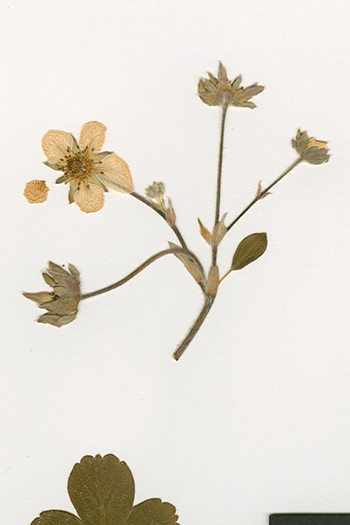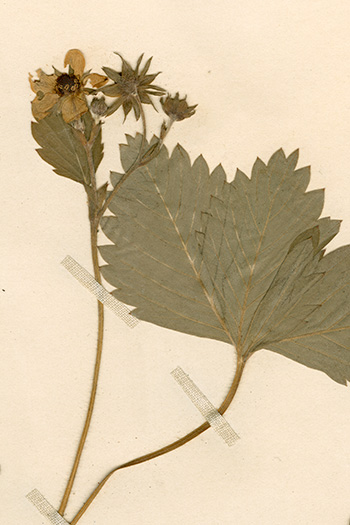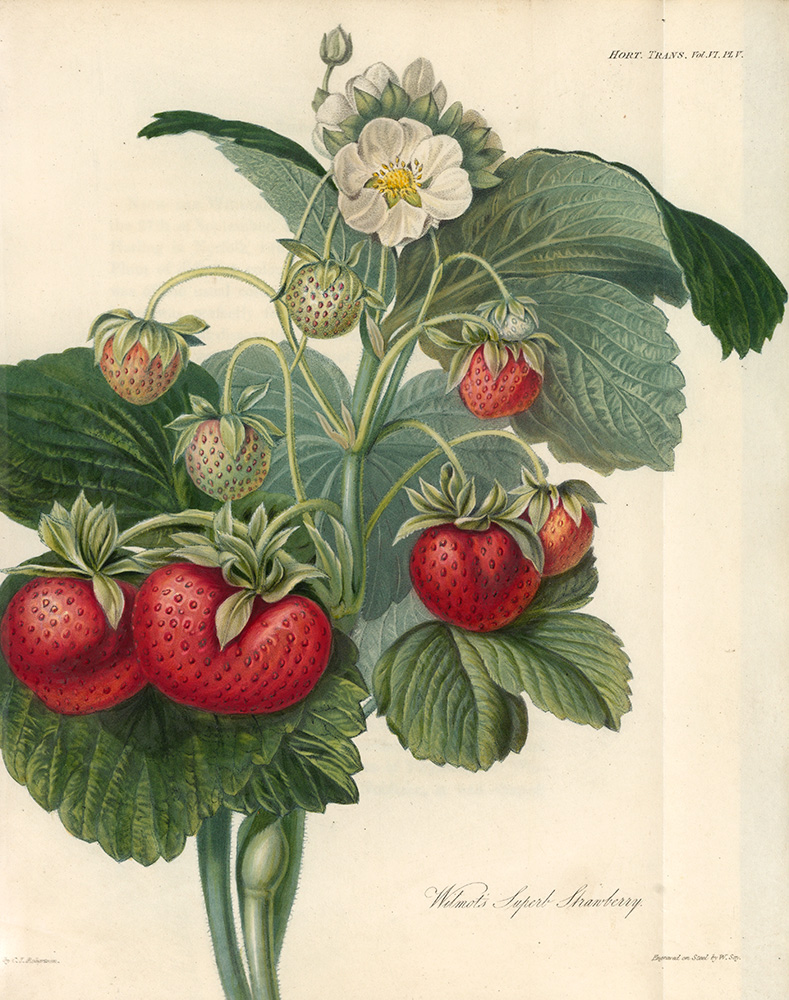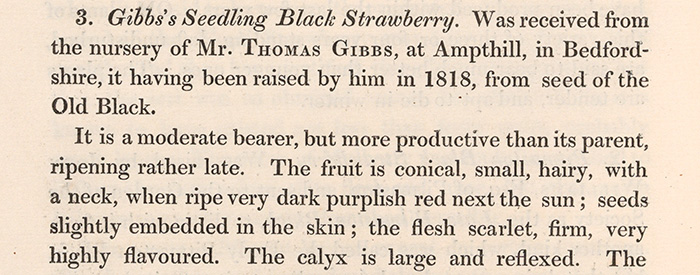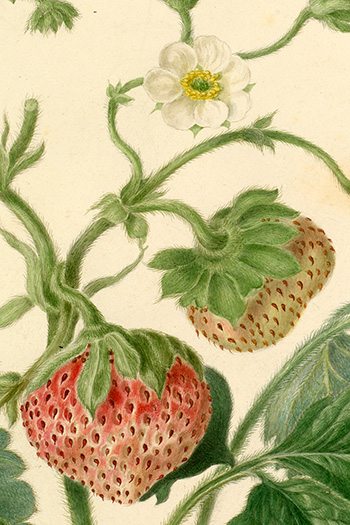Insights into our collections
How the RHS transformed British strawberry growing
Did you know that strawberries as we know them are a relatively modern ‘invention’, and that the RHS played an important role in turning them into a British Summertime favourite?
It may be hard to believe, but strawberries as we know them are a relatively modern ‘invention’. Small woodland strawberries have been grown for centuries, transplanted from woodlands into our gardens from the Middle Ages onwards. Though delicious, there fruits were small and not a commercially viable crop. This only began to change around 250 years ago, and our archives reveal that the RHS played an important role in turning them into a British Summertime favourite, with 166,000 portions of strawberries being consumed each year at Wimbledon alone.
Detail of a Herbarium specimen of Fragaria chiloensis, alongside a detail of a Herbarium specimen of Fragaria virginiana
Thousands of new strawberry varieties
In the 18th century a large fruited, but rather tasteless, variety of strawberry called Fragaria chiloensis was introduced from Chile. Crosses were made by French growers between this Chilean strawberry and an American species Fragaria virginiana resulting in a cultivar known as ‘Ananas’. This breeding work was halted by the French Revolution but continued in the UK. English growers were enthusiastic and Thomas Andrew Knight, the President of the young RHS - then known as the Horticultural Society of London - produced thousands of different crosses alone. With this massive growth in new strawberry varieties came a great deal of confusion about names. Growers turned to the Horticultural Society for advice.
A recent addition to the RHS Lindley Library archive is a letter dated 22 June 1820, from Honorary Secretary Joseph Sabine, written in response to nurseryman Thomas Gibbs who had sent some strawberries to the Society’s offices to ask for help in identifying them.
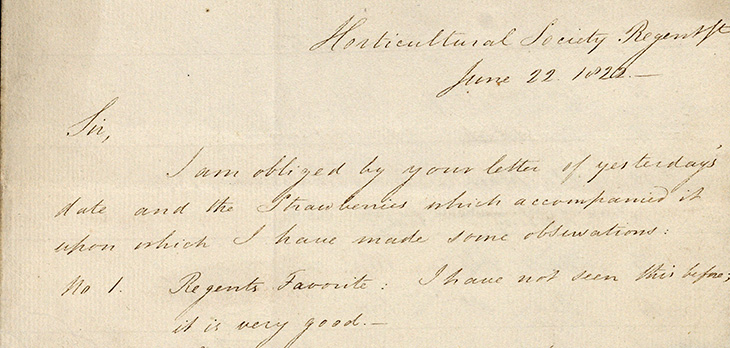
Extract from a letter from Joseph Sabine to nurseryman Thomas Gibbs, thanking him for the parcel of strawberries he sent to the Horticultural Society, and identifying their varieties.
The RHS’ first ‘citizen science’ project
Thomas Gibbs was not alone in needing help, so the Society decided that a reliable system of comparing new varieties was needed, to confirm names and identify which strawberries were best to grow in different conditions. In 1822, the Society sent out printed forms to its Fellows, asking them to list the varieties they grew so that the Society could inspect them. A total of 70 forms were received and more than 400 parcels of strawberries were sent for. This was effectively the Society’s first ever ‘citizen science’ project – starting a tradition that continues to this day: drawing on the experiences of our membership to inform our scientific work and shape our gardening advice.
‘Wilmot’s Superb’, one of the Strawberries assembled by the Horticultural Society as part of their ‘citizen science’ project in the 1820s
The strawberries received were planted at the Society’s garden in Chiswick and carefully tended and monitored by a young trainee gardener from Scotland named James Barnet. Barnet’s observations of the strawberries were published in the Society’s Transactions (the forerunner of The Garden magazine) in 1825.
Varieties described included the Grimstone Scarlet Strawberry (which had the sweetest fruit), The Bestock (the biggest bearer) and the Lewisham Scarlet Strawberry. Barnet split all varieties into seven types: Scarlet, Black, Pine, Chili, Hautbois, Green, Alpine and Wood. To further help growers with identification, the Society also commissioned beautiful paintings of what they identified as being some of the finest strawberry varieties.
Left: Detail of the Pine Strawberry, in Hooker’s Fruit drawings. A/HFD/1/25
Right: Detail of the Chili Strawberry, in Hooker’s Fruit drawings. A/HFD/5/24
This work enabled strawberry breeders to make informed choices about the different varieties they would grow and breed from. Many of the strawberries from this experiment like the Charlotte strawberry, Wilmot’s Superb, the Grove End Scarlet and Keen’s Seedling, are now a distant memory. However, their legacy lives on as they are the ancestors of the strawberries we enjoy every summer.
Discover more
Author
Fiona Davison, Head of Libraries and Exhibitions, RHS Lindley Library
Published
19 June 2025
Insight type
Short read
